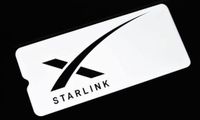Starlink, the satellite internet service developed by SpaceX and led by Elon Musk, is set to revolutionize connectivity in remote areas through its innovative Direct to Cell project. This initiative aims to provide internet access where traditional operators have failed to reach, offering a lifeline to those in rural or isolated regions. With the recent approval from the U.S. Federal Communications Commission (FCC), Starlink is on track to expand its services globally, promising to enhance the lives of many who have been left in the digital dark.
In January 2024, Starlink launched its first satellites as part of this ambitious project, and throughout the past year, the company has conducted crucial tests to ensure the service operates smoothly. The excitement surrounding the Direct to Cell initiative has surged following the FCC's green light, which is expected to facilitate greater accessibility to the internet worldwide.
One of the main concerns for potential users of the Direct to Cell service is whether special antennas or hardware would be necessary for connection. Fortunately, Starlink has confirmed that users will not need to invest in additional equipment. The service transmits signals directly to smartphones, simplifying the process of connecting to the internet. This means that users can send messages, make calls, and navigate online, even in the most isolated locations.
Moreover, the technology allows Internet of Things (IoT) devices to connect using LTE standards, which have been compatible with mobile phones since 2009. As a result, any modern smartphone is equipped to utilize Starlink's services, opening up a world of possibilities for connectivity.
Starlink's commitment to providing global internet access is particularly significant in regions where traditional infrastructure is lacking. The potential impact on communities in remote areas is profound, as it can facilitate communication, access to information, and even emergency services. The approval from the FCC marks a pivotal moment for Starlink, as it prepares to roll out its Direct to Cell services.
In Brazil, the arrival of Starlink has been met with enthusiasm, as the service promises free emergency internet access, even in the most remote locations. Initially designed for emergency situations, this service allows users to connect for essential communications such as text messages and SOS alerts. Although the free service does not currently support web browsing or streaming, SpaceX has announced plans to introduce paid packages in the future for more comprehensive internet access.
To take advantage of Starlink's free emergency internet, users in Brazil must meet certain requirements. Compatible devices include the iPhone 14 and newer, Google Pixel 9 and its variants, Motorola models launched from 2024, and several Samsung Galaxy models, including the A14, A15, A16, A35, A53, A54, and the S21 series and beyond. Users must also ensure their devices’ operating systems are up to date to support the connection.
Once users have a compatible device, they need to activate the emergency satellite connection option in their settings. This function allows the device to automatically connect to Starlink's network when traditional mobile coverage is unavailable. To do this, users can navigate to their mobile settings and enable the option for emergency satellite access.
Despite its limitations, the free emergency service represents a significant advancement in internet accessibility, especially for those affected by natural disasters or living in areas with limited connectivity. It is designed to ensure that essential communications can continue even when conventional networks fail.
SpaceX has ambitious plans for expanding Starlink's services in Brazil. The emergency internet access is just the beginning. Alongside this, a paid internet package is already available, starting at R$55 per month, which offers enhanced connectivity for those in regions where traditional internet is hard to come by.
The emergence of Starlink in Brazil has the potential to disrupt the telecommunications market, providing high-quality internet access even in the country's most remote areas. As the project progresses, it promises to connect more people and provide essential services that were previously out of reach.
In summary, the Starlink Direct to Cell project is set to transform the way people connect to the internet, particularly in hard-to-reach areas. With its innovative approach and commitment to accessibility, Starlink is paving the way for a future where connectivity knows no boundaries. As the service rolls out, it will undoubtedly play a crucial role in bridging the digital divide and enhancing the quality of life for countless individuals worldwide.




